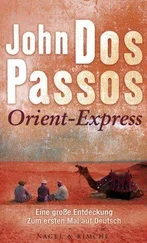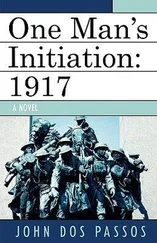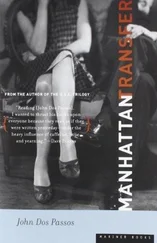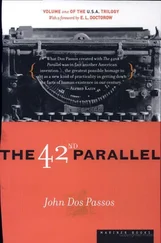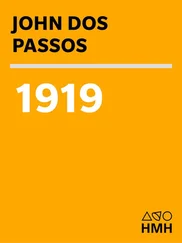It’s always been like this. I can’t help a sort of family feeling for the Brazilians. Perhaps the fact that I had a Portuguese grandfather helps account for it. When people ask me why I keep wanting to go to Brazil, part of the answer is that it’s because the country is so vast and so raw and sometimes so monstrously beautiful; but it’s mostly because I find it easy to get along with the people.
We turned off the road to see the baroque pilgrimage church at Congonhas do Campo. The shrines at Congonhas are full of the work of a very local sculptor known as Aleijadinho (the little cripple), who lived in the late eighteenth century. Working a soft soapstonelike rock, Aleijadinho developed an extreme form of baroque expressionism. In the carving of the Stations of the Cross along the steep steps that lead up to the main church, and in the saints and martyrs of its gravely balanced façade, he pushed sentimentality beyond bathos, into a realm of ecstasy reminiscent of El Greco’s painting. Joy, sadness, pain, always pain, come through with physical intensity. Some of the stone saints seem, as certain miracleworking images are supposed to do, to weep real tears.
The steps that led up to the church were thronged with countrypeople who had vowed the pilgrimage. Some climbed on their knees. Along the fringes sat beggars and old men and cowled women selling fruit and trinkets and little meat pies. The faces of the pilgrims seemed to me to wear the expressions that the little cripple had carved into his stone figures. The old beggars particularly had a look of being fresh from Aleijadinho’s chisel. These seemed deeply sentimental people. It was easy for them to give way to feeling sorry for themselves and for others. The twin faucets of sorrow and joy were right within reach. Their joy in their pilgrimage lay in the dolefulness of it.
At the foot of the steps the cobbled street was encumbered by market stalls and flanked by little bars and eating houses. A quiet jollity reigned. Men and women greeted friends and neighbors with broad smiles. Children, here as everywhere in Brazil very much indulged, scuttled about underfoot. In a smell of cane brandy and sizzling grease and charcoal fires and spoiled fruit crushed between the cobbles people were enjoying themselves. Flies zoomed joyously about. Burros and mules tied to the walls were being fed small swatches of hay. Radios blared out sambas. From inside a doorway came the sound of a guitar. In spite of a good deal of filth and ragged poverty, there was a sense of wellbeing, of a sort of wellintentioned innocence about the people of the back country. I don’t know how much the pilgrims looked at Aleijadinho’s sculptures, or what they thought of them if they did, but it was obvious that the little cripple was their man: it was their feelings he had carved so painfully into the stone.
Ouro Prêto the ancient capital of the province of Minas Gerais was quite different. There the colonial baroque took on a stately and imperial air. It was a city of long façades and irregularshaped squares with stony mountains at the end of every vista. Though sprung from a different goldrush and from a different culture, and artfully built of carved stone and stucco instead of being knocked together out of pine boards, Ouro Prêto had the mining town look as unmistakably as a place like Virginia City in our Sierras. Now it is a city of schools and museums. Students from the mining college give life to the streets. We found Niemeyer’s new hotel magnificently unfinished. Chill mountain airs romped through the corridors. The covers were scanty and the beds were of unforgettable hardness.
On the way back the Whites and I spent a cosy night in a nineteenth century sort of family hotel in a textile town called Juiz de Fora, which means something like “the law west of the Pecos”; and then returned over the rainy mountains of the coastal range to the cosmopolitan comforts of Copacabana. We had become fast friends. We couldn’t quite imagine why we had been having such a good time.
Sespe: An Alliance That Worked
My next expedition was to the Rio Doce.
When a British company built the Rio Doce Railroad to bring out the iron ore from the stripmine at Itabira in the high mountains of Minas Gerais, its construction vied as a mankiller with the Madeira-Mamoré Railroad in the far western reaches of Amazonas, which was said to have cost a life for every tie that was laid. Now the Special Public Health Service, organized with the help of the Rockefeller Foundation, in the good neighbor days of World War II, had turned the valley into a health resort, so the story went. I arranged to go see.
It was a rough trip. Almost anywhere else in the world the trip might have seemed uncomfortably rough, but the good humor of my companions and the general tendency to take things as they came, turned it into a pleasant outing.
In those days no matter where you were going from Rio you arrived at Santos Dumont airport before dawn and stood around drinking coffee while the plane crews collected and prepared in their leisurely Brazilian way for the takeoff. Dr. Penido, who was at that time in charge of the Rio Doce Health Service, turned up just in time to insist on paying for my coffee. A complete stranger got ahead of me with a coin when I tried to buy a newspaper. Our first stop on the flight north was in a scorched meadow near a sunflattened little town with redtiled roofs under coconut palms. The passengers piled out on the runway to stretch their legs and clustered round an old man selling green coconuts with straws stuck in to drink the water from. By the time I’d fished some money out of my pocket to pay for my coconut, the steward had already settled for it. Muito obrigado . A little embarrassing, this Brazilian hospitality, but it does make a foreigner feel they are glad to have him there.
Vitória, the capital of the State of Espírito Santo and the shipping port for the Itabira ore, turned out to be on the flank of a rocky island. First thing we were all bunched up for a photograph on the terrace of a clubhouse built on the ruins of the fort which used to guard the harbor’s narrow mouth. More Public Health Service doctors and a couple of Americans who worked for the Rio Doce Railroad had met us at the airstrip. Now we were confronted with the salutations of the local newspaper editor and of a group of townspeople.
It was Sunday and the sun was bright and the bay was blue and the men wore shining white suits. Inside the clubhouse young people were dancing the samba. While his photographer was crouching and peering the newspaper editor pointed out to me some old prostrate cannon rusting on the ledge below the clubhouse terrace. In the seventeenth century, he said, the Dutch had tried to take Vitória and the defenders had stretched cables from this fort to the granite shore opposite and had sunk a Dutch man-of-war and saved the city for Brazil. It was in this war against the Dutch that Brazilian nationality first came into being. His chest puffed out and he strutted like a bantam as he turned to mug the camera.
The sun was hot and the breeze off the sea was cool. After the shutter clicked, we stood a moment looking out, over the dancing blue waves of the harbor hemmed in by hills, at the redtiled roofs of the brick and stucco town and the small freighters tied up to the wharves and the yellow bulk of the oredocks opposite. There were gulls. A few dark man-of-war birds skimmed overhead.
Was this the mouth of the Rio Doce? I asked. Good Lord no, the mouth of the Rio Doce was miles away to the north. Vitória was the port for the Rio Doce Railroad down from the mines which has to climb out of the valley over a mountain range to get to it. The Rio Doce emptied into a shallow delta and had no decent harbor at its mouth. Everybody began to explain at once that the historical impediment to development in southern and central Brazil had from colonial days been that you always had to climb a mountain range to get into the interior. The iron ore deposits up in the central part of Minas Gerais had been known and worked since the beginning of Brazil, but it was only now that large scale shipment was in sight. In the early days hostile Indians blocked the use of the waterlevel route up the Rio Doce into the mining country. Then it had been malaria … “But the main impediment is bureaucracy,” one of the engineers interrupted as we climbed into the car to go into town to lunch, “Brazilian bureaucracy.”
Читать дальше


